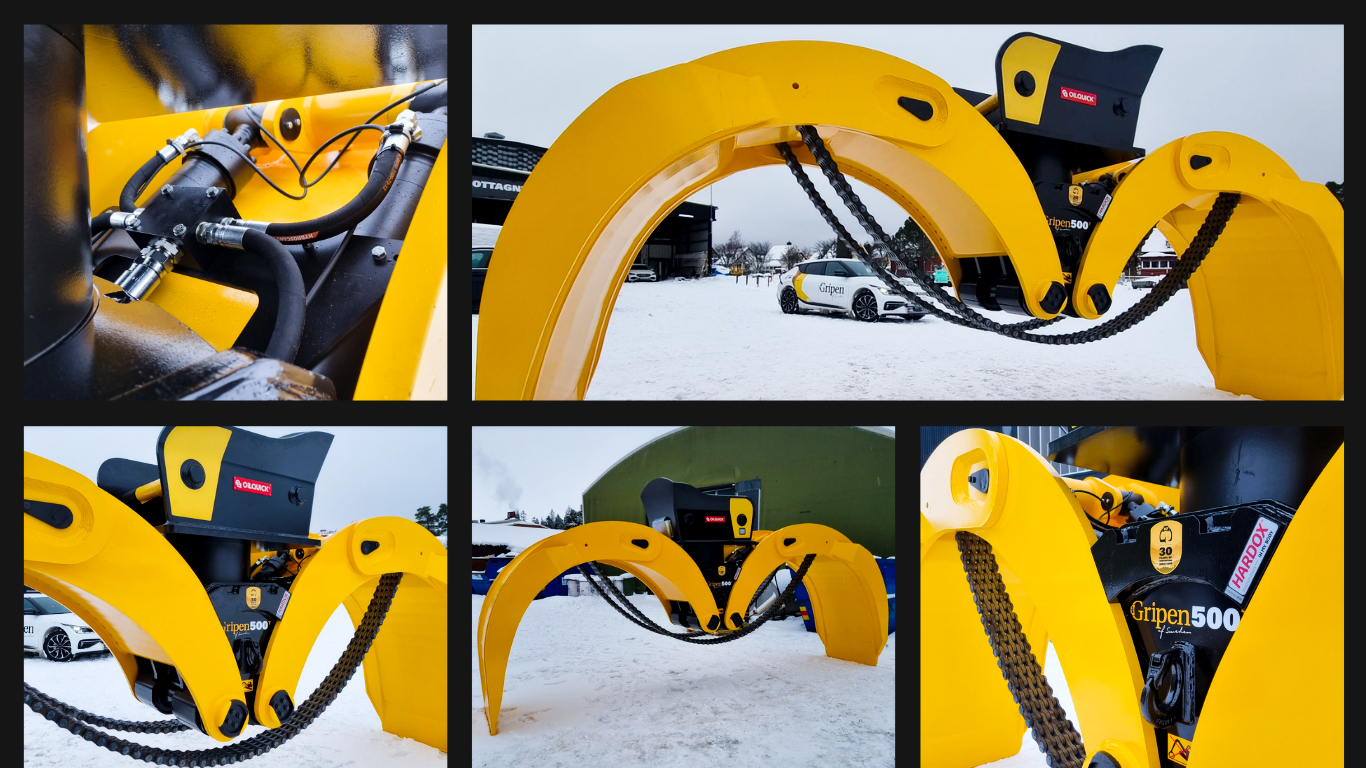The German crane manufacturer Sennebogen, through its Swedish dealer OP System, has successfully sold one of its largest cranes to the Port of Sölvesborg. To complete the crane delivery, they also ordered a powerful grapple tool from the Swedish company HSP Gripen.
The crane on which a grapple from HSP Gripen will be mounted on has an impressive capacity and can handle weights of up to 50 tons. A fully loaded Gripen 500T handles 10-12 tons of timber as a comparison. Timber handling on these applications requires specially adapted tools for optimal handling, which is something Gripen has in its DNA and a big reason why the company got this assignment.
Gripen 500T measures an impressive 5.4 meters in grapple width, is 1.3 meters wide and weighs 6.6 tons. The customer has specifically requested extra claw width to ensure stability and optimal function in their timber handling. This type of application is subject to high loads and external force, which requires a design of this scale.
The production of the impressive tool required great accuracy and expertise. The Gripen 500T is manufactured in several parts which allowed HSP Gripen to handle it smoothly in their facility. And it has been an extensive job – the welding jobs alone took a month for two skilled welders.
The 500T was finally tested at the company’s facility and loaded onto a truck for transportation to its final destination, the port of Sölvesborg.
”It was with some tension the tests were carried out, to see if everything would work as intended. But it did. It’s all about luck and timing”, says Tomas Jonsson, the owner of HSP Gripen, with a twinkle in his eye.
The deal not only marks a success for the companies involved, but also opens the possibility of more ports investing in similar cranes and associated tools to optimize their material handling processes.
”Not many manufacturers offer grapple tools in this size (5.0m2), especially not in Sweden and the Nordic countries, so we are obviously looking forward to being able to offer this product to more ports and terminals”, Jonsson concludes.



